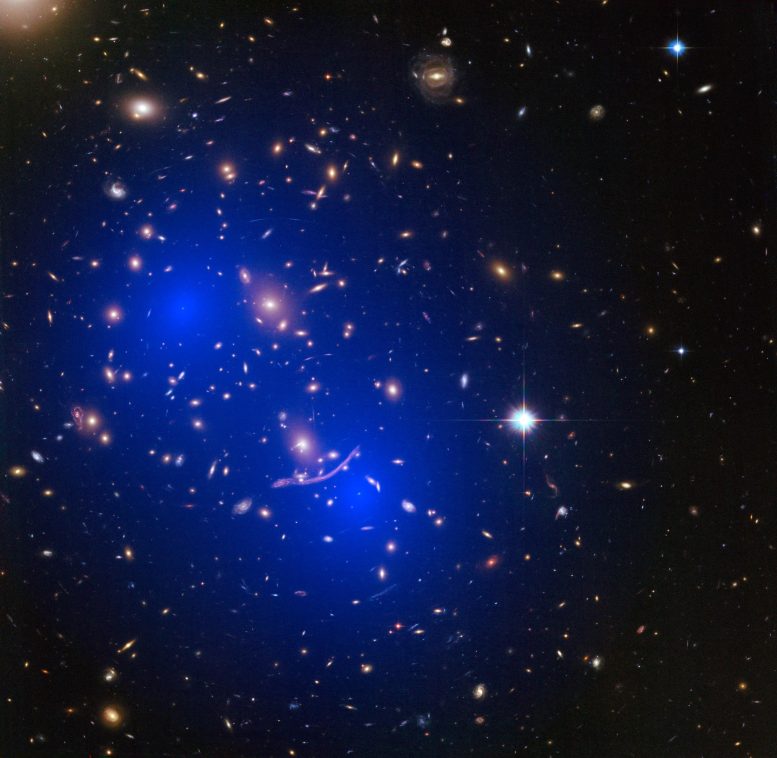
This is a NASA/ESA Hubble Space Telescope image of the galaxy cluster Abell 370. Shown in blue on the image is a map of the dark matter found within the cluster. This cluster was part of a study of 72 galaxy cluster collisions which determined that dark matter interacts with other dark matter even less than previously thought. Credit: NASA, ESA, D. Harvey (École Polytechnique Fédérale de Lausanne, Switzerland), R. Massey (Durham University, UK), the Hubble SM4 ERO Team and ST-ECF
What is Dark Matter?
Dark matter is a form of matter that cannot currently be observed directly, but is estimated to comprise about 85% of all matter in the Universe.
In our Universe, objects are attracted to one another by gravity. The greater an object’s mass, the stronger its gravitational pull. Gravity’s effects can be observed across our Universe: planets orbit the Sun; exoplanets orbit other stars; galaxies interact and collide; and so on.
If a celestial object’s mass is known, then it is possible to calculate how it will interact with other celestial objects via gravity. However, calculations based on observations of many galaxies often do not work out as expected. The galaxies appear to lack sufficient mass to be held together by gravity — they should fly apart, or should never have formed to begin with, according to the laws of gravity. As a result, many astronomers have theorized that there must be a form of matter that has not yet been discovered, known as dark matter, which holds these galaxies together.
For the calculations based on observations to make sense, dark matter must make up about 85% of all the matter in our Universe, and 27% of our Universe’s total mass-energy density. It is referred to as ‘dark’ because it does not appear to interact with the electromagnetic field, and therefore does not seem to emit, reflect, or refract light.
Dark matter is a form of matter that cannot currently be observed directly, but is thought to comprise about 85% of all matter in the Universe. Credit: ESA/Hubble (M. Kornmesser & L. L. Christensen)
Hubble carried out surveys and developed new methods to look for clues about dark matter. By analyzing the COSMOS survey — one of the largest surveys undertaken with Hubble — an international team of scientists assembled one of the most important results in cosmology: a three-dimensional map that offers a first look at the web-like large-scale distribution of dark matter in the Universe. This historic achievement in 2007 accurately confirmed standard theories of dark matter structure formation, and took astronomers from inference to a direct observation of dark matter’s influence in the Universe.
Mapping dark matter’s distribution in space and time is fundamental to understanding how galaxies grew and clustered over billions of years. Tracing the growth of the clustering of dark matter may also eventually shed light on dark energy, a force which repels matter rather than attracts it as gravity does, which may have influenced how dark matter clumps.
In 2009, Hubble uncovered strong new evidence that galaxies are embedded in halos of dark matter. Peering into the tumultuous heart of the nearby Perseus galaxy cluster, Hubble discovered a large population of small galaxies that have remained intact while larger galaxies around them are being ripped apart by the gravitational tug of other galaxies. This provided further evidence that the undisturbed galaxies are enshrouded by a ‘cushion’ of dark matter that protects them from the rough-and-tumble in their neighborhood.
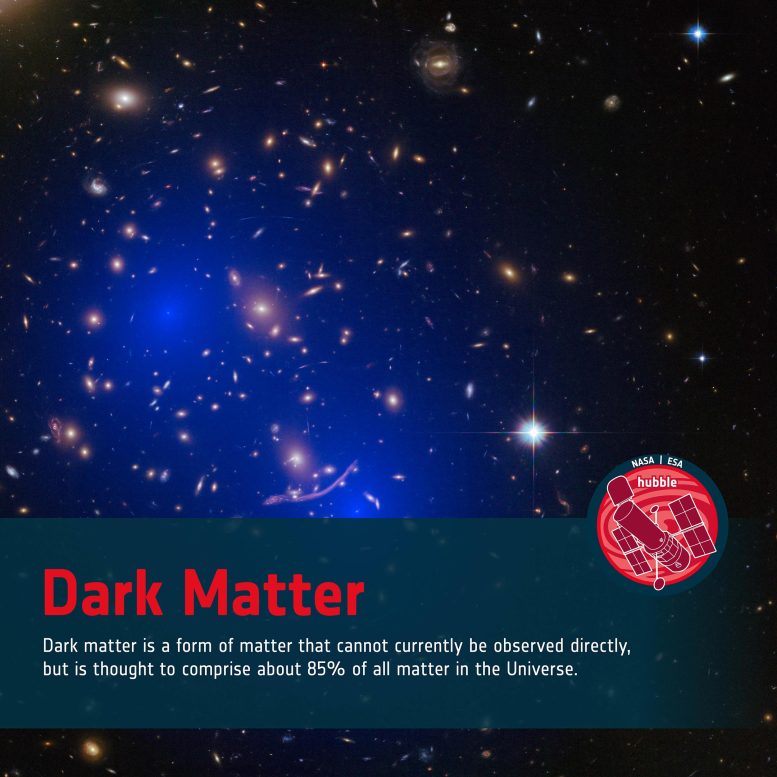
Dark matter is a form of matter that cannot currently be observed directly, but is thought to comprise about 85% of all matter in the Universe. Credit: ESA//Hubble, NASA, ESA, D. Harvey (École Polytechnique Fédérale de Lausanne, Switzerland), R. Massey (Durham University, UK), the Hubble SM4 ERO Team and ST-ECF
Hubble also solved the mystery of the galaxy NGC 1052-DF4 in 2020, which appeared to be missing most of its dark matter. Astronomers concluded that the gravitational forces of a neighboring galaxy stripped the dark matter from NGC 1052-DF4 and now the galaxy is being torn apart. The discovery not only solved an astronomical conundrum, but has also brought a sigh of relief to astronomers. Without it, scientists would be faced with having to revise our understanding of the laws of gravity.
Hubble and NASA’s Chandra X-ray Observatory observed a powerful collision between galaxy clusters, which revealed that the titanic collision has separated dark matter from ordinary matter. This 2008 discovery provided valuable and striking evidence for researchers in their quest to understand dark matter and its properties.
Further Hubble and Chandra collaboration continued in 2015 into the study of how dark matter in clusters of galaxies behaves when the clusters collide. The results showed that dark matter interacts with itself even less than previously thought, and narrows down the options for what this mysterious substance might be.


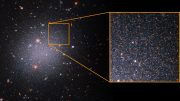
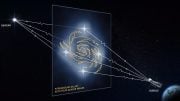

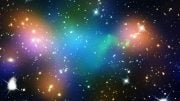

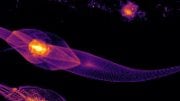
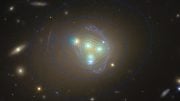
It’s been about a decade since I first visualized, performed and made a low budget video (“1Gravity,” @charlesgshaver.odysee.com) using wheels to demonstrate the interaction and power of increased gravity in rotating objects. As a lay outsider I can only speculate that what is being ‘discovered’ is primarily effects of separate gravity fields acting on rotating objects with their own fields. It seems highly likely, if one galaxy collides with another, a lot of rotating suns, planets and moons would lose angular momentum and, therefore, appear to lose dark matter. A less obvious side effect would be changes in the speed of light in deep space that could alter the apparent distance of those objects from the earth.
Another possibility, from a view of String Theory, is that Dark Matter appears to us as an effect of string/anti-string annihilations. As you may know, quantum mechanics requires that strings must be formed as pairs in the quantum foam – a string and an anti-string – that immediately annihilate each other. Quantum mechanics also requires both the string and anti-string to be surrounded by “jitters” that reduce their monstrous vibrating energies. What if this jitter remains for a fraction of an instant after their string/anti-string annihilations? This temporary jitter would be seen by us as matter, via E=mc2, for that instant before it too returns to the foam. That’s why we never see it – the “mass” lasts only for that instant but is repeated over and over and over, all over. Specifics on this can be found by searching YouTube for “Dark Matter – A String Theory Way”
It appears to me the ‘strings’ of string theory of quantum mechanics are actually the lines of gravity force in my more standard model of the universe. As only a lay ‘outsider,’ I can neither agree or disagree with quantum entanglement because I haven’t seen or tested it for myself. Therefore, because I can see and feel the effects of gravity during rotating wheel experiments within earth’s ambient field of gravity and accept that all objects radiate gravity of their own, I’ll stand with my model and postulate, too, that the ‘jitters’ of your pairs of strings is the pulsing and/or vibrating of my gravity lines of force induced by some still higher form of energy, perhaps reverberations of the Big Bang. It would seem that I have some advantage over quantum mechanics theorists no matter how much more highly educated they are. Again, I can see and feel the results of my experiments, at standard temperature, pressure and gravity.
I don’t know when the truth about dark matter will be known, but I’m sure no one will understand it ….